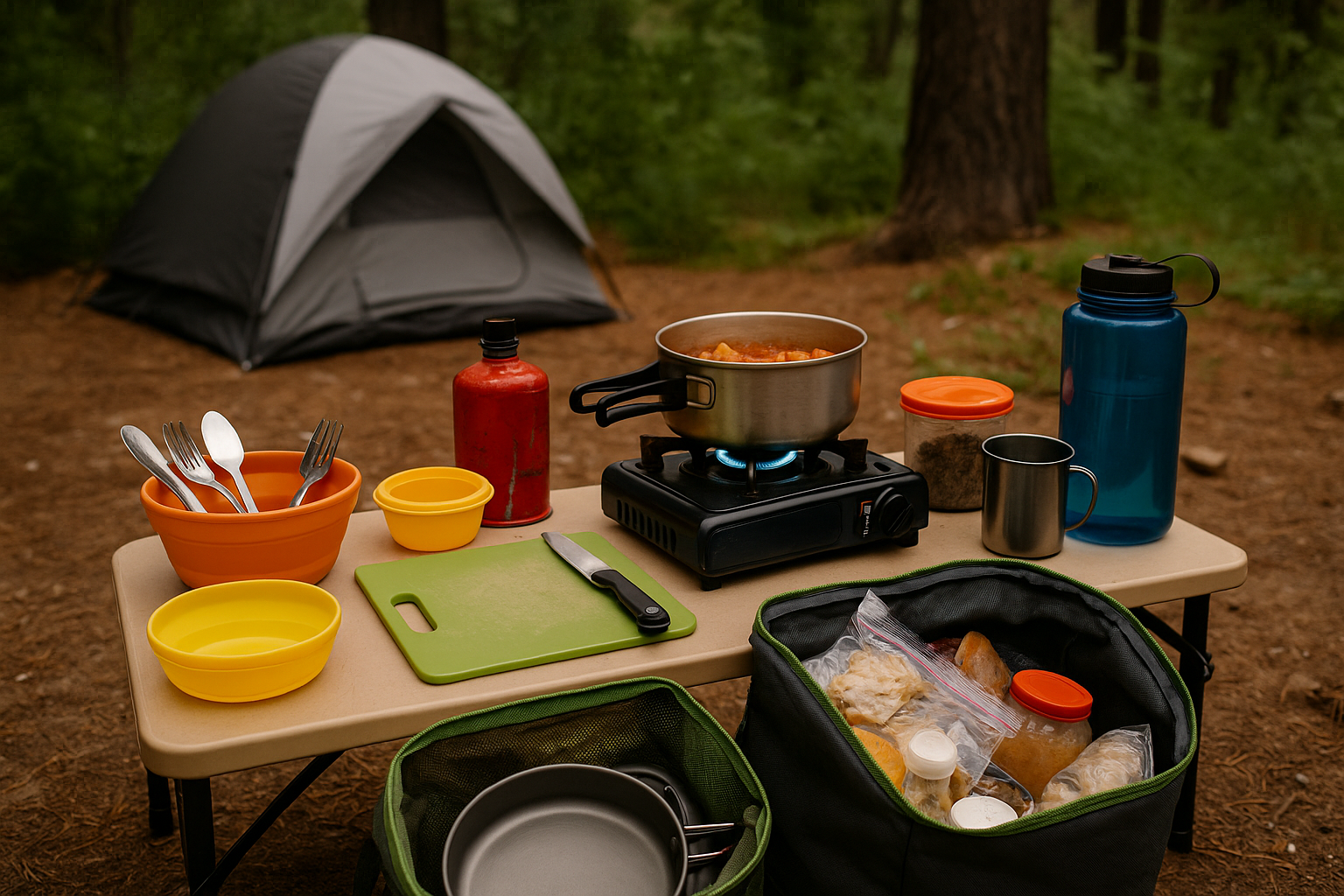You’re halfway through a camping trip. The gear’s scattered. Utensils are missing. Cooking feels like a scavenger hunt.
Sound familiar?
A disorganized camping kitchen isn’t just frustrating—it can slow you down, waste food, and attract wildlife. But with smart packing strategies and trail-tested organization tips, you can keep your camp kitchen running like clockwork.
This isn’t about fancy gear or Pinterest-worthy camp setups. It’s about real-world, rugged solutions to stay organized and efficient—whether you’re solo in the backcountry or leading a group in remote terrain.
🚫 Why Camping Kitchens Fall Apart on the Trail
- Overpacking or underpacking leads to clutter or missing essentials.
- Lack of organization means spending too much time searching for gear.
- Messy setups increase the risk of food contamination and waste.
- Attracting critters and insects with poorly managed trash and food.
- No designated zones for cooking, prepping, and cleaning.
🏞️ 1️⃣ Start with a Packing List Built for Survival
✅ Prioritize Essentials
- One lightweight stove (or fuel-free method)
- Fuel or solar/alternative cook system
- Compact cookware (pot, pan, kettle)
- Multipurpose utensils (spork, folding knife, tongs)
- Collapsible or nesting dishware
- Water treatment and storage gear
✅ Minimalism Wins
- Focus on dual-purpose gear (e.g., a pot lid that doubles as a plate).
- Limit “just-in-case” extras—carry backups only for critical items (filter, stove).
✅ Pre-Pack Dry Ingredients
- Use labeled resealable bags or pre-measured containers.
- Include snack packs, powdered drinks, and energy bars.
🎒 2️⃣ Smart Packing Systems to Avoid Chaos
✅ Modular Packing
- Divide gear into categories: Cooking, Prep, Cleaning, Food Storage.
- Use color-coded dry bags, pouches, or bins for each.
- Label bags with duct tape or marker for quick ID.
✅ Nested Gear Saves Space
- Stack pots, bowls, and lids inside each other.
- Store utensils inside pots.
- Roll dish towels around breakables for padding.
✅ Top-Access Storage
- Keep frequently used items near the top of your pack or kitchen tote.
- Use a dedicated pouch for your stove, fuel, and lighter.
🍽️ 3️⃣ On-Trail Setup: Functional and Fast
✅ Designate Zones
- Cooking Zone: Stove, fuel, utensils, and hot gear.
- Prep Zone: Cutting board, seasonings, dry ingredients.
- Cleaning Zone: Collapsible sink, soap, sponge, trash bag.
✅ Use Natural Features
- Flat rocks, logs, or stumps make great counters.
- Tree branches for hanging towels, utensils, or bags.
✅ Ground Tarp or Mat
- Lay out a clean tarp to define your kitchen area and prevent gear from getting dirty.
✅ Keep a “Grab Bag”
- A small pouch with lighter, spork, soap, wipes, and emergency rations.
- Always have this accessible for quick setups or roadside meals.
🧳 4️⃣ Field-Tested Packing Tips from Real Campers
🏕️ “I color-code my dry bags—red for cooking, blue for cleaning, green for food. It cuts setup time in half.”
— Liam T., solo backpacker
🏕️ “I pre-pack my meals in labeled Ziploc bags. No digging for spices or pasta at camp—just grab and cook.”
— Mina K., car camper
🏕️ “I keep a mesh bag clipped to my pack for wet items. It dries while I hike and stays out of my gear.”
— Jared S., ultralight hiker
🧼 5️⃣ Quick Cleanup Without the Mess
✅ Scrape Before Washing
- Wipe off food scraps with a spatula or paper towel.
- Reduces the amount of soap and water needed.
✅ Two-Basin System
- One basin for soapy water, one for rinsing.
- Conserve water and speed up the process.
✅ Pack It Out Smart
- Use odor-proof trash bags or bear canisters.
- Separate wet waste from dry recyclables.
🍲 6️⃣ Efficient Meal Planning = Less Chaos
✅ Plan Simple, One-Pot Meals
- Stews, pastas, or dehydrated meals that need only water.
- Reduces the number of pots and utensils to clean.
✅ Pre-Measure Spices & Oils
- Store in mini bottles or baggies to avoid leaks and spills.
- Label clearly to avoid guesswork.
✅ Pack High-Energy Snacks
- Keep easy-to-grab trail mix, bars, or jerky accessible.
- Reduces meal stress and hunger panics.
📦 7️⃣ Gear That Keeps You Organized
| Item | Why It’s Essential |
|---|---|
| Dry bags or stuff sacks | Segmented storage |
| Collapsible wash basin | Easy cleanup anywhere |
| Multipurpose utensils | Fewer tools, less weight |
| Nested pots & pans | Compact, space-saving |
| Compact spice kit | Flavor without bulk |
| Trash bag & liner | Clean pack-out |
| Mesh bags | Dry wet gear on the move |
| Ground tarp | Defines kitchen space |
🌿 8️⃣ Leave No Trace with an Organized Kitchen
- Pack out all waste, including food scraps and used water.
- Disperse rinse water 200+ feet from water sources.
- Use biodegradable soap sparingly—a little goes a long way.
- Inspect your site before leaving. Make sure nothing’s left behind.
🌄 Conclusion: Master Trail-Ready Kitchen Organization
A messy camp kitchen slows you down, wastes precious time, and adds stress to your trip. But with smart packing systems, organized setups, and a few simple field-tested hacks, you can cook, eat, and clean up with minimal hassle.
🔥 Pack modular gear and pre-measured food.
🔥 Use natural features to your advantage.
🔥 Clean as you go and pack out responsibly.
Because a well-organized kitchen isn’t just about convenience—it’s about survival, safety, and enjoying your adventure.
👉 Ready to upgrade your camp kitchen? Bookmark this guide and build your organized, stress-free kitchen system today.

